Gallery: Riverside — Main Street Pedestrian Mall
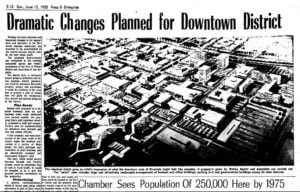
Following the 1956-57 opening of the Riverside Plaza mall, downtown shopping began a slow but steady decline. In response, city leaders quickly began working at remaking the city’s civic center. Discussions took place regarding additional parking, modernized storefronts, and streetscape improvements.
In June 1958, Los Angeles architectural firm Welton Beckett & Associates presented a downtown master plan covering several city blocks. Envisioned in the plan was a pedestrian mall along Main Street from Seventh to Twelfth streets. Although Welton Beckett’s full master plan was eventually rejected, elements provided the impetus for a similar, yet smaller, pedestrian mall between Sixth and Tenth streets.

Unveiled in September 1963, this second version was designed by Riverside architectural firm of Ruhnau, Evans & Steinmann, with landscape planning from Eckbo, Dean, Austin & Williams (EDAW) of Pasadena. General contractor for the project was Milburn & Sansone of Riverside. Both the Eckbo and Milburn firms had also worked on Fresno, California’s “Fulton Mall” (1964), which partly explains the Eckbo-esque landscaping similarities between the original Riverside (one | two | three | four) and Fresno (one | two | three | four) pedestrian malls, of which some elements remain.

In late 1965, the city settled upon a revised version of Ruhnau’s 1963 plan. As a result, work tearing out Main Street began in May of 1966. And on November 23, 1966, the newly-landscaped (and auto free) mall was officially dedicated. A single bisecting east-west street – Ninth – was closed off at the new mall. The other two east-west streets – Seventh (now Mission Inn Avenue) and Eighth (now University Avenue) – remained open through the four-block pedestrian mall.
The first two decades were marked with retail defections and dwindling business, common during the suburban exodus affecting many downtowns of the era. Thus, the city adjusted by adding civic uses and encouraging office development, which helped spur three office buildings: Security Pacific National Bank (1973), Riverside City Hall (1975), and Mission Square (1984). In addition, a convention center (1976) and adjacent 12-story hotel (1987) were later built one block north of the mall’s Sixth Street terminus. Though technically not part of the pedestrian mall, their proximity essentially made them the north-end anchors.
A significant boost to the pedestrian mall’s business climate was provided by the 1993 reopening of the Mission Inn hotel. And since 2000, the mall has steadily grown in popularity and indeed is considered a unique part of downtown Riverside.

Excepting the construction of City Hall and the repurposing of the Security Pacific bank building into the California Tower (mid-1990s) – both of which made significant changes to some of the original mall designs – the pedestrian mall received only modest updates. This changed in March 2008, when an extensive, year-long modernization and makeover began. As part of the update, Ninth Street was reopened through the refurbished mall.
Below is a collection of images for the original 1966-era pedestrian mall, including a few renderings and early photos. Also present are views of various buildings, storefronts, and landscapes along the mall throughout the years prior to its 2008/2009 makeover.
Previous
- RaincrossSquare.com – Two iconic downtown Riverside buildings turn 50 (November 2025) | Herman Ruhnau, AIA (July 2006)

1966 – Main Street pedestrian mall under construction (RXSQ Collection)
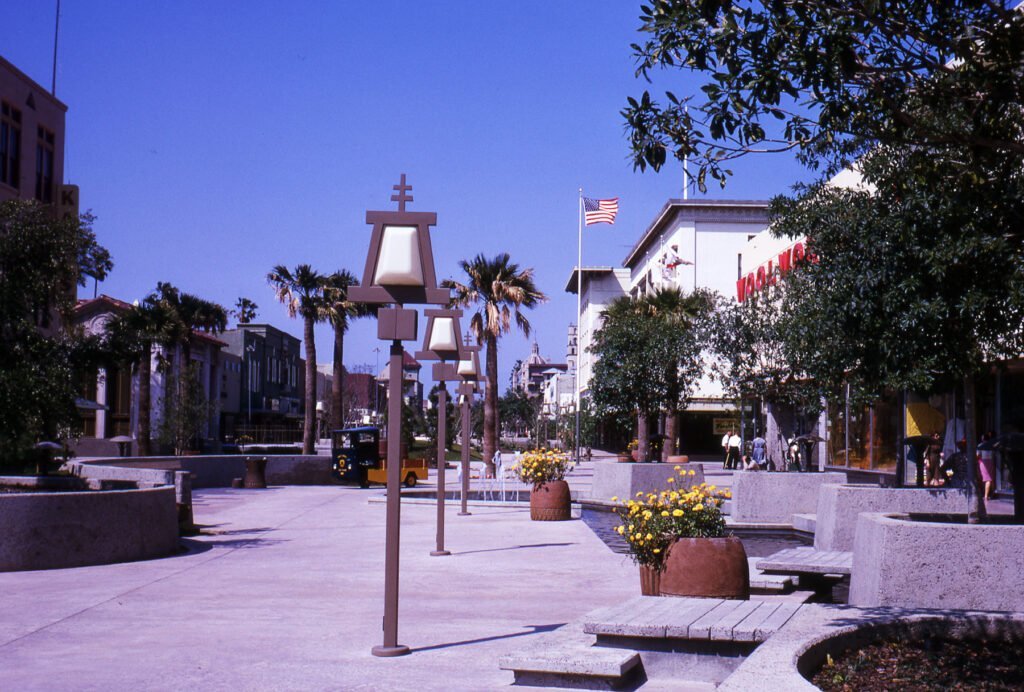
Circa 1967 – Main Street pedestrian mall (RXSQ Collection)
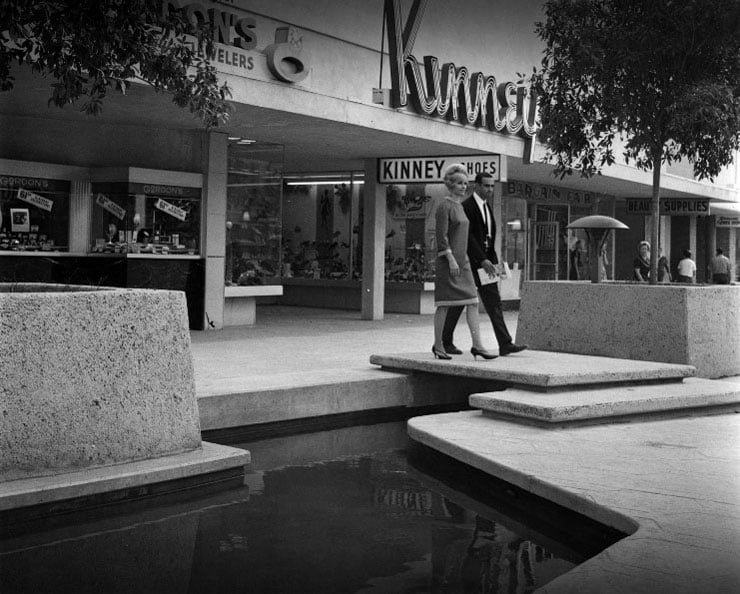
Circa 1967 – Main Street pedestrian mall (Ruhnau Clarke Architects)
2025 UPDATE: Some galleries are currently unavailable
Galleries
Gallery: Main Street: 1963 — Before the Pedestrian Mall
Image panels created in 1963 by architectural firm Ruhnau, Evans & Steinmann documenting the four city blocks (6th to 10th streets) during planning for Riverside’s Main Street pedestrian mall prior to its completion in November 1966 (Courtesy Ruhnau Clarke Architects and City of Riverside)
Gallery: Main Street Pedestrian Mall — Through the Years (1966-2008)
Gallery: Main Street Pedestrian Mall through the years (1966-2008)
Sources: City of Riverside, Riverside Press-Enterprise (PE-19580615, PE-19630911), Fresno Bee (FB-19640330), “A Colony for California” (Tom Patterson), Riverside Public Library (Local Subject Files)
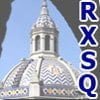
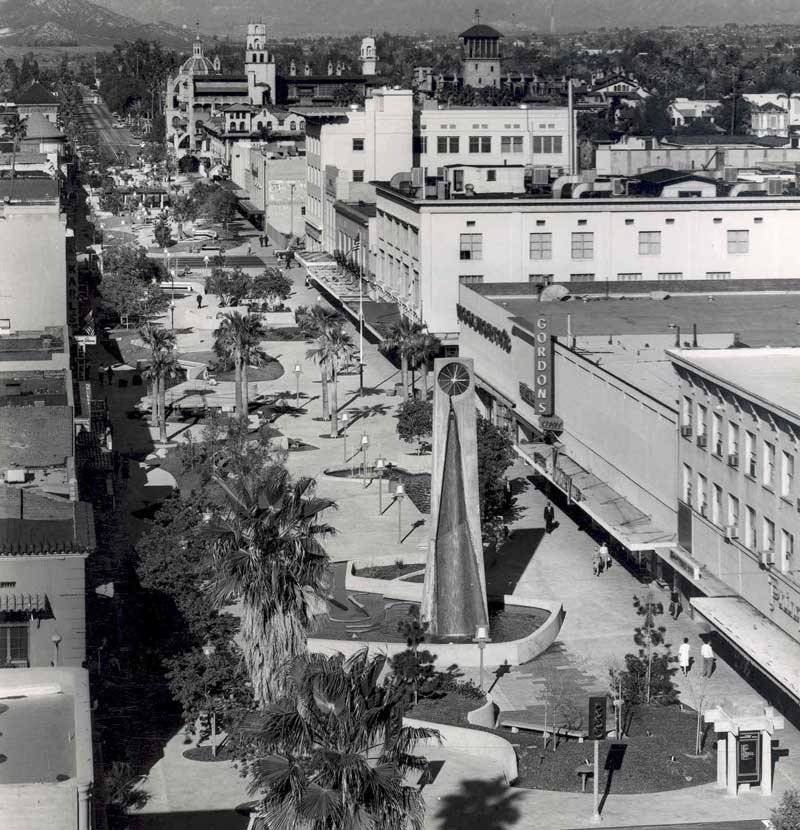
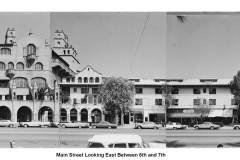
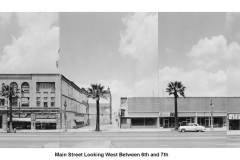
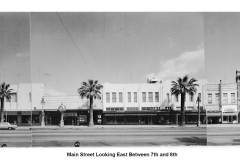
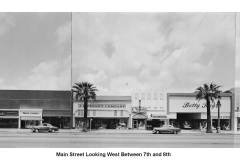

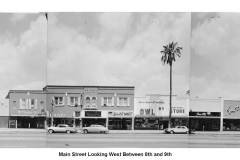
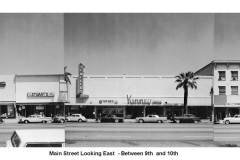
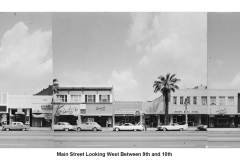
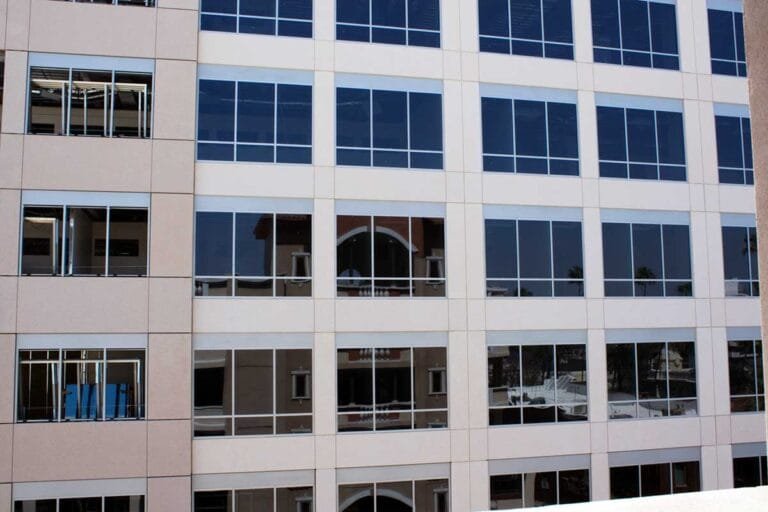

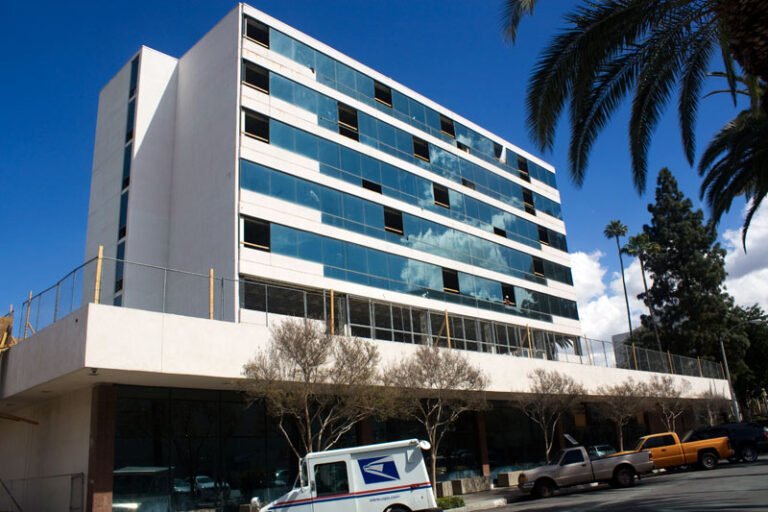
2 Comments